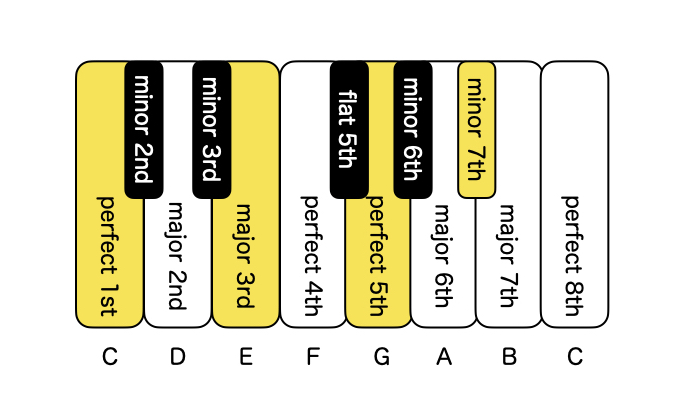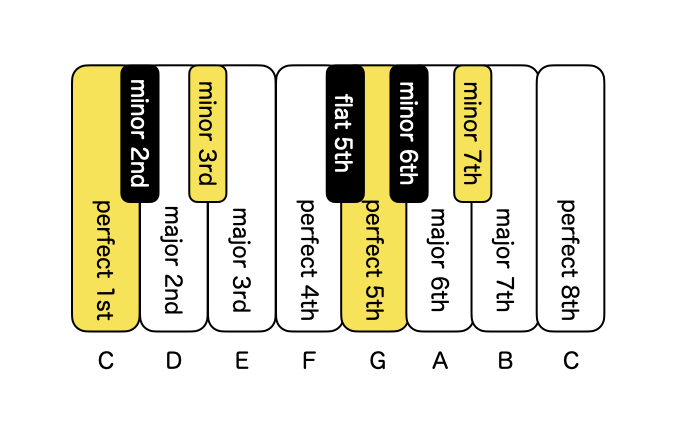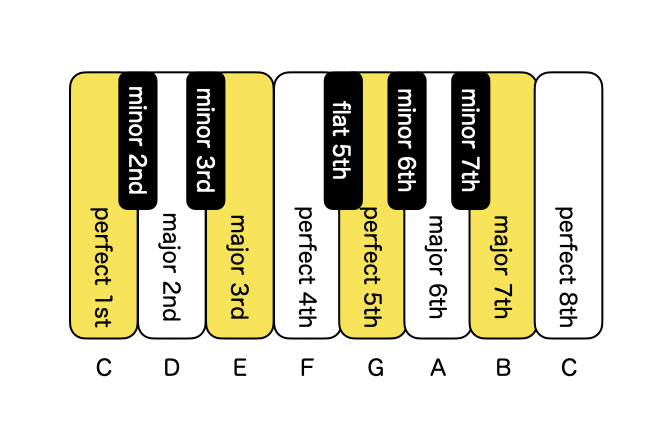A four-notes chord is a triad chord with an additional seventh degree note, also called a seventh chord. There are two types of seventh degree notes, major seventh degree and minor seventh degree, both of which can be used as a seventh chord.
The first is the dominant seventh chord, which uses the minor seventh degree added to the major triad chord. In the case of the C chord, the addition of the minor seventh degree makes the chord C7.

The seventh chord is a very important chord in the chord progression. The C7, for example, settles down when you go to F next. The reason for this is the sound created by the notes of the major third and minor seventh degrees, also known as the tri-tone. This seventh chord is often used in chord progressions such as endings and modulations.
Seventh chords can also be made with minor chords. For example, in the example above, if you change the major third degree to a minor third degree, you can make a chord called Cm7, which is Cm plus a minor seventh note.

Next is the major seventh chord, which uses the major seventh degree. It is written as M7, maj7, or △7 instead of just 7. In the case of the seventh, if there is an M, maj, or △, it is a major seventh chord, and if there is none, it is minor seventh or dominant seventh chord.

The major seventh chord sounds a little more lofty. It is often used in bossa nova and jazz.
This major seventh note is mostly used in combination with major triad chords, but it can also be used in minor triad chords. In the example above, the major seventh is added to the C chord, and the chord is called CM7, but if you change the major third to a minor third, the chord is composed of the Cm chord with the major seventh added, and it is called CmM7. I don’t think this minor major seventh chord comes up very often.